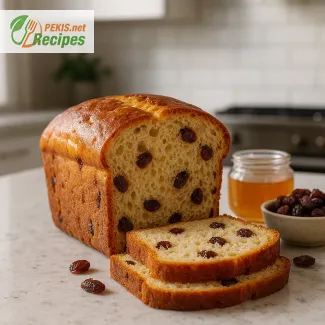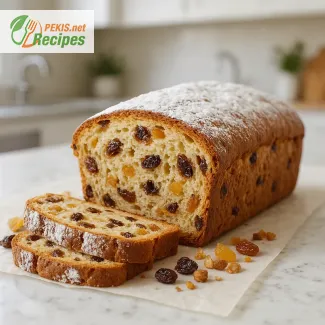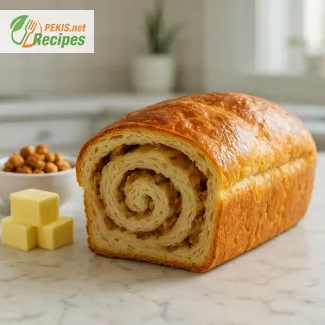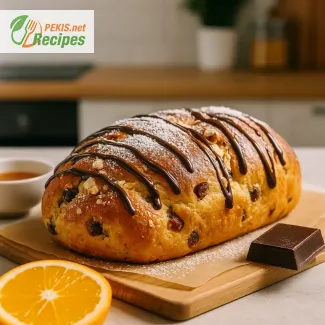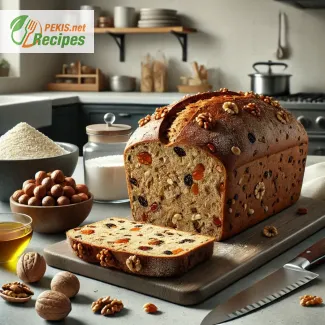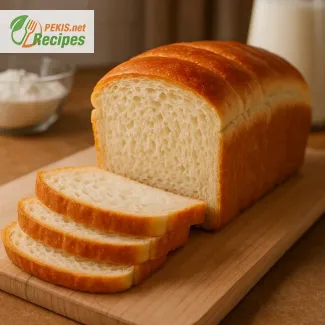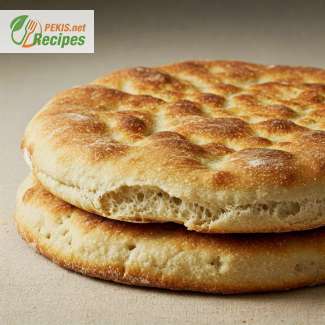
A Timeless Recipe: Unleavened Bread for First Communion
The Significance of Unleavened Bread in First Communion
Unleavened bread has been an essential element in Christian traditions for centuries, symbolizing purity and spiritual preparation. Made without yeast, this bread represents the humility and simplicity at the heart of the First Communion ceremony. Whether you are preparing for a religious celebration or simply exploring traditional bread recipes, this timeless method brings authenticity and reverence to your table.
What Makes Unleavened Bread Unique?
Unlike conventional loaves, unleavened bread is made without yeast or other rising agents, resulting in a flat, crisp, or slightly chewy texture, depending on the preparation method. This simple yet meaningful bread is rooted in biblical history, particularly in the story of the Last Supper and the Passover feast, where it was consumed as a symbol of spiritual devotion.
Its minimal ingredients create a straightforward recipe that has stood the test of time. Despite its simplicity, unleavened bread holds deep significance, making it a staple in many religious ceremonies worldwide.
The Taste and Texture of Traditional Unleavened Bread
If you have never tasted unleavened bread, imagine a delicate balance between a soft, slightly chewy bite and a mild, nutty flavor. Depending on the preparation method, it can be crisp like a cracker or slightly tender, similar to flatbread. The beauty of this bread lies in its ability to adapt, making it a versatile addition to both sacred rituals and everyday meals.
Some variations include a touch of olive oil for added richness, while others incorporate a hint of honey to enhance the flavor profile. However, the most authentic versions stick to the basics: flour, water, and salt, ensuring the focus remains on tradition.
The Ritual and Reverence of Baking Unleavened Bread
Preparing unleavened bread is more than just following a recipe—it is a symbolic act of devotion. Each step, from mixing the dough to rolling and baking, can be seen as an opportunity for reflection and mindfulness. Many families and churches continue this tradition as a way to connect with their faith and pass down sacred customs through generations.
Beyond its spiritual significance, making this bread at home allows you to appreciate the care and craftsmanship involved in ancient baking techniques. Without relying on commercial yeast or modern additives, this recipe remains as pure and wholesome as it was centuries ago.
Ways to Enjoy Unleavened Bread Beyond First Communion
While unleavened bread is often associated with religious ceremonies, it can also be enjoyed in a variety of ways. This simple flatbread pairs beautifully with soups, stews, and salads, making it a versatile choice for many meals. It can also be served with honey, butter, or fresh herbs, transforming it into a delightful accompaniment to any table setting.
For those interested in homemade bread recipes, unleavened bread is an excellent starting point. With minimal ingredients and a quick preparation process, it is ideal for both beginners and experienced bakers looking to explore traditional techniques.
The Legacy of Unleavened Bread in Modern Times
Even in today’s fast-paced world, the tradition of baking unleavened bread continues to hold cultural and religious importance. Whether for a First Communion, Passover, or a simple act of remembrance, this bread remains a timeless staple in many households.
Bringing together history, faith, and culinary tradition, unleavened bread serves as a reminder of the simple yet profound ways in which food connects us to our past. As you prepare your own batch, take a moment to reflect on the generations who have done the same, keeping this sacred tradition alive.
- Prepare the Dough: In a large mixing bowl, combine flour and salt. Slowly add water, mixing with a wooden spoon or your hands until a dough begins to form. If using, add olive oil at this stage.
- Knead the Dough: Transfer the dough onto a lightly floured surface and knead for about 5 minutes, until it becomes smooth and elastic. If the dough is too sticky, add a small amount of flour. If it’s too dry, add a few drops of water.
- Divide and Shape: Cut the dough into 8 equal pieces. Roll each piece into a ball, then flatten using a rolling pin to form thin circles (about 15 cm / 6 inches in diameter).
- Cook the Bread: Heat a dry non-stick skillet or griddle over medium-high heat. Cook each piece for 1-2 minutes per side, until lightly golden with small bubbles forming. Flip and cook the other side. Avoid overcooking, as the bread should remain slightly soft and pliable.
- Serve: Allow to cool slightly before serving. Unleavened bread is best enjoyed fresh, but it can be stored in an airtight container for up to 2 days.
Enhancing the Authenticity and Flavor of Unleavened Bread
The Art of Refining a Traditional Recipe
Traditional unleavened bread is known for its simplicity and purity, making it a staple in religious ceremonies and historical traditions. However, even the most classic recipes can be adjusted to enhance texture, flavor, and nutritional value. By making small modifications, we can tailor the bread to different preferences while maintaining its authentic essence. Whether it's through ingredient substitutions, preparation techniques, or minor recipe adjustments, there are numerous ways to improve this time-honored bread.
Ingredient Adjustments for Improved Texture and Taste
One of the best ways to enhance the texture of unleavened bread is by modifying the flour type. Traditional recipes typically use all-purpose flour, but experimenting with different flour varieties can yield unique results:
- Whole Wheat Flour – Adds a deeper, nuttier flavor and increases the fiber content, making the bread more nutritious. However, it produces a denser texture, so combining it with a small amount of white flour can balance the consistency.
- Spelt Flour – A more digestible alternative to traditional wheat, giving the bread a lightly sweet and nutty taste.
- Rye Flour – Creates a slightly earthier taste and a chewier texture, though it absorbs more moisture, requiring minor adjustments in water content.
- Gluten-Free Flour Blends – For those avoiding gluten, rice flour, almond flour, or cassava flour can be used. However, these flours lack elasticity, so adding a small amount of xanthan gum or tapioca starch can help bind the dough together.
The Role of Fats: Enhancing Softness and Flavor
Though traditional unleavened bread is made with only flour, water, and salt, incorporating a small amount of fat can significantly improve texture and taste:
- Olive Oil – Adds a subtle richness and prevents the bread from drying out too quickly.
- Butter or Ghee – Provides a mildly creamy and tender texture, perfect for those who enjoy a softer bite.
- Coconut Oil – Introduces a slight sweetness while keeping the bread moist for longer.
Adding fats doesn’t compromise the authenticity of the bread but enhances its mouthfeel and extends its freshness.
The Impact of Water Temperature on Dough Consistency
An often-overlooked detail is the temperature of the water used in the dough. Adjusting water temperature can influence the dough’s elasticity and ease of rolling:
- Cold Water – Produces firmer dough, requiring more effort to roll but preventing excessive stickiness.
- Lukewarm Water – Helps create a smoother, more pliable dough, making it easier to shape.
- Hot Water – Results in a slightly chewier texture, similar to soft flatbreads.
Avoiding Common Mistakes in Preparation
Despite its simplicity, preparing unleavened bread requires attention to key details to achieve the best outcome. Here are some common mistakes and how to avoid them:
- Overworking the Dough – Unlike yeast-based bread, kneading too much can make the bread too tough. It’s best to mix until just combined to maintain tenderness.
- Rolling the Dough Too Thick or Too Thin – If the dough is too thick, it remains undercooked and chewy. If too thin, it can become brittle and dry. An optimal thickness of around 3-4 mm (1/8 inch) ensures the best texture.
- Cooking at the Wrong Temperature – Cooking at too low a temperature leads to longer cooking times and excessive dryness, while too high a temperature can cause burnt edges before the center is fully cooked. Medium-high heat is ideal for a golden, evenly cooked surface.
- Not Letting the Dough Rest – Allowing the dough to rest for 10-15 minutes before rolling helps it hydrate properly, making it smoother and easier to shape.
Healthier Variations for Modern Lifestyles
For those seeking a healthier alternative, small ingredient modifications can make this bread more nutritious while retaining its traditional character:
- Incorporate Seeds or Herbs – Adding sesame, flaxseeds, or chia seeds provides extra fiber and omega-3 fatty acids. Fresh or dried rosemary, thyme, or oregano can elevate the bread’s flavor.
- Reduce Sodium – Lowering salt content or using sea salt instead of regular table salt offers a more balanced mineral profile.
- Increase Protein Content – Mixing in chickpea flour or quinoa flour boosts protein levels while maintaining a delicate texture.
- Add Natural Sweetness – For a subtly sweeter variation, incorporating a teaspoon of honey or maple syrup provides a hint of caramelized flavor without refined sugars.
Why Homemade Unleavened Bread is Superior
While store-bought versions may offer convenience, nothing compares to freshly homemade unleavened bread in terms of quality, taste, and tradition. Some key advantages of making it at home include:
- Control Over Ingredients – No preservatives, artificial additives, or excessive sodium.
- Freshness & Aroma – The smell of freshly cooked bread enhances the overall dining experience.
- Texture Customization – You can adjust the thickness, crispness, and softness to your liking.
- Cultural & Religious Connection – The hands-on preparation process fosters a deeper spiritual and cultural appreciation.
Experimenting with Cooking Methods
Although traditional unleavened bread is usually prepared on a hot skillet, alternative cooking methods can create unique variations:
- Oven Baking – Yields a crispier texture, ideal for longer storage.
- Grill Cooking – Adds a smoky, charred flavor, making it an excellent complement to Mediterranean dishes.
- Pan Frying with a Light Oil Brushing – Results in a softer, slightly golden crust while maintaining a delicate bite.
With just a few ingredient adjustments and cooking techniques, traditional unleavened bread can be elevated in taste, texture, and nutritional value. Whether you prefer a classic approach or a modern adaptation, the key is to respect the tradition while making it enjoyable and accessible for today’s lifestyles. From flour choices to cooking methods, these small modifications can turn a simple flatbread into a versatile, flavorful, and deeply meaningful culinary experience.
- Contains gluten due to wheat flour.
- May contain traces of allergens if prepared in an environment where other allergens are present.
Ingredient Substitutions for Allergy-Free & Gluten-Free Options:
- Gluten-Free: Replace all-purpose flour with a gluten-free flour blend (such as rice flour or almond flour).
- Salt-Free Option: Omit salt for a low-sodium version.
- Oil-Free Option: Simply leave out olive oil for a more traditional, crisp texture.
- Iron: 0.9 mg – supports oxygen transport in blood
- Calcium: 5 mg – essential for strong bones
- Magnesium: 8 mg – aids muscle and nerve function
- Potassium: 45 mg – helps maintain proper fluid balance
- Vitamin B1 (Thiamine): 0.05 mg – important for energy metabolism
- Whole wheat variations provide more polyphenols – beneficial for heart health
- Olive oil (if used) contains vitamin E, which supports skin health
- Minimal processing preserves natural nutrients, offering a clean and wholesome food choice
